Did you know there are wars being fought inside your computer? We call one of them the “browser wars”. In this post, I am going to try to answer the questions ‘What are the browser wars?’, ‘How do you know when you are losing?’ and ‘What can I do about it?’.
What are the browsers?
The best known is Internet Explorer, which comes standard on Microsoft Windows computers. It is the “Big Blue E” on your desktop or taskbar. This is the one that lets you get to all those webpages out there. But there are other browsers out there like Chrome (Google), Safari (Apple), Firefox, Opera, and others. This is a quick picture of who the players are (and which ones are winning):

A few years ago, Microsoft’s Internet Explorer was the dominant browser. It was built into Windows and you almost had to use it. But they got sued (and lost) to several companies who wanted people to be able to use different browsers. That opened up the market to competitors.
Which browser do you use?
Which browser you use means big business to lots of people. That is why they fight so hard to get you to use their browsers. And, once you have chosen one, the war is not over. There will still be efforts to get you to switch back or to yet a different browser.
You will find lots of people who want to install stuff into your browser. The stuff they want to install are usually called “toolbars”. These people include: Google, Microsoft, Yahoo, Alexa, and many more. There are even toolbars that specialize in certain things like news, sports, weather, education, business, etc. Why do people want to install their toolbars in your browser? It’s because the toolbars can select which search engine you use, which websites you use, and many other things. The toolbar makers make money when they can influence us to use their customers’ websites.
How do they get into my browser?
This is big business, and the toolbar people have lots of paid allies. The biggest ally group are the software manufacturers. They get paid to include toolbars with their software and encourage you to install them when you install their software. You can usually avoid installing toolbars and other unwanted stuff by selecting “Custom Install” instead of the “Recommended Installation” (or some such wording). In the Custom Install, look for boxes you can uncheck for all the unwanted software. There will usually be at least 2-4 things you do not want.
Why avoid the toolbars?
The biggest reasons to prevent toolbars from getting into your browser are: 1) it makes your computer slower, 2) it represents potential bugs and site conflicts inside your browser, 3) they take up space on your browser so you see less of the website you want, 4) your searches may be directed toward their customers instead of giving you all the possible choices, and 5) some toolbars will track what you do on the net to build up user records for targeted advertising.
What can you do to get rid of the Toolbars?
The best thing, of course, is to stop them from being installed. But once the toolbars have been installed, there still ways to remove them. The most reliable is to go into the Windows Control Panel and use the Add/Remove Programs feature to uninstall the programs. This is generally the most efficient because you see all the programs listed there.
Another way, sometimes easier, is to go to Internet Explorer > Settings > Manage Addons. Here you will find the toolbars that managed to get installed on your computer. You can disable them here. They are not removed, but they shouldn’t cause any problems if they are disabled.
Don’t forget the Home Page War
Another battle is over who gets to control your “home page” setting. The home page is the website you go to when you open your browser. EVERYBODY wants you to go to their website first. And there are lots of ways for them to change your setting (although they don’t usually do it without your permission). There is a way to take back your home page and set it to any website you want it to be. In the Internet Explorer, go to Settings > Internet Options > General. That is where you find the website your browser will go to when you start it up (or you click the home button in the upper right of your browser). You can type in whatever other address you want here. That will become your new home page.
Which Browsers and Toolbars Do I Use?
I use Microsoft Windows Internet Explorer (usually called IE). This is a very good browser, comes installed with Windows, and I really don’t have many reasons to change to a different one. Since it is the #1 browser, all the websites make sure their sites work with the Internet Explorer. The other browsers may have difficulty displaying certain websites. The Apple browser, for example, does not accept Flash, which is used by lots of sites; this means you won’t be able to view or display Flash elements on website. On the other hand, Chrome (made by Google) does a better job of displaying some of Google’s online documents than the Internet Explorer. So if you use Google’s online document sites, you probably want to use their browser for enhanced viewing.
Personally, for toolbars, I do not use any. I am not willing to give up an extra row of space at the top of my browser for things I do not use. Nor am I willing to have my browser slowed down by all the add-ins that come with the toolbars. Some of you may like them and find them convenient; it is a matter of preference.
I hope this has been helpful!

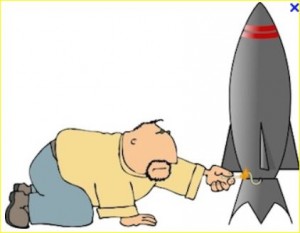 I have talked with a number of you about attending this event. If you haven’t figured it out, I am excited about it, which is the reason I wrote the postings on Rocket Building and have been dusting off some of my old Estes rockets (these are store-bought and they almost always work).
I have talked with a number of you about attending this event. If you haven’t figured it out, I am excited about it, which is the reason I wrote the postings on Rocket Building and have been dusting off some of my old Estes rockets (these are store-bought and they almost always work).
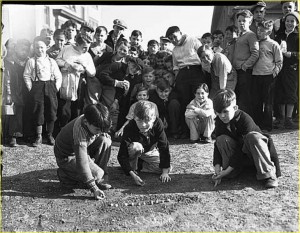 Fortunately, I was by far the best marble player at Lincoln School. Only Fred Herring could sometimes beat me, but not often. So, armed with a few more marbles, I went out to increase my wealth. And I knew all the tricks. As soon as my challenge was accepted, I would immediately say, “Triple Kings! Last all times!”, which guaranteed me the coveted right to go last for the duration of the game. Lots of kids, knowing my reputation, wanted to play “For Funs”, but I didn’t give in. It was “For Keeps” or nothing. And, of course, we all agreed that “Trades” were allowed because if you lost the game, you certainly didn’t want to lose your lucky marble, so you were allowed give up a similar marble of like quality. And, with every kid who would agree, we would put an extra marble or two in the pot to increase the stakes.
Fortunately, I was by far the best marble player at Lincoln School. Only Fred Herring could sometimes beat me, but not often. So, armed with a few more marbles, I went out to increase my wealth. And I knew all the tricks. As soon as my challenge was accepted, I would immediately say, “Triple Kings! Last all times!”, which guaranteed me the coveted right to go last for the duration of the game. Lots of kids, knowing my reputation, wanted to play “For Funs”, but I didn’t give in. It was “For Keeps” or nothing. And, of course, we all agreed that “Trades” were allowed because if you lost the game, you certainly didn’t want to lose your lucky marble, so you were allowed give up a similar marble of like quality. And, with every kid who would agree, we would put an extra marble or two in the pot to increase the stakes.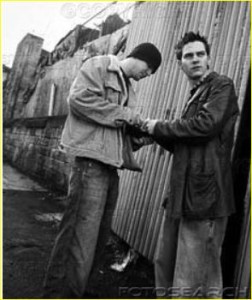 In four more days, I had what I needed to go back to my supplier. He was happy to see me. He’d even laid in a new supply in anticipation of my return.
In four more days, I had what I needed to go back to my supplier. He was happy to see me. He’d even laid in a new supply in anticipation of my return.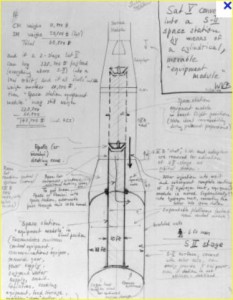 This is when I realized we might need to go to the library to find out more. I found a book by a guy named Goddard who made some early rockets. It had to be a good book because they said he was the Father of Rocketry right on the front cover. One of the first fuels he experimented with was saltpetre mixed with sugar. Eventually, he went on to use liquid oxygen and stuff like that. I decided to give the saltpetre another look because they talked about it in the first couple of chapters of the book. The beginning of the book was the easiest to understand, because each new chapter kept adding more drawings and formulas and diagrams and complicated stuff. Sticking to the first chapter would make things much easier. I admit the saltpetre and sugar didn’t really sound plausible, but the guy had written it in a book, so it had to be right.
This is when I realized we might need to go to the library to find out more. I found a book by a guy named Goddard who made some early rockets. It had to be a good book because they said he was the Father of Rocketry right on the front cover. One of the first fuels he experimented with was saltpetre mixed with sugar. Eventually, he went on to use liquid oxygen and stuff like that. I decided to give the saltpetre another look because they talked about it in the first couple of chapters of the book. The beginning of the book was the easiest to understand, because each new chapter kept adding more drawings and formulas and diagrams and complicated stuff. Sticking to the first chapter would make things much easier. I admit the saltpetre and sugar didn’t really sound plausible, but the guy had written it in a book, so it had to be right. On the scale of explosions, it wouldn’t be considered a huge explosion. In truth, I don’t even remember the sound. I do remember the mushroom cloud that leaped out of my little test tube. It shot up until it hit the ceiling, at which point it started spreading throughout the room. You know how everything seems to be in slow motion during an emergency? It was like that. I watched that demon cloud as it broke free, leaving its signature forever on my mind, indistinguishable from the nuclear bomb blasts we were taught to fear.
On the scale of explosions, it wouldn’t be considered a huge explosion. In truth, I don’t even remember the sound. I do remember the mushroom cloud that leaped out of my little test tube. It shot up until it hit the ceiling, at which point it started spreading throughout the room. You know how everything seems to be in slow motion during an emergency? It was like that. I watched that demon cloud as it broke free, leaving its signature forever on my mind, indistinguishable from the nuclear bomb blasts we were taught to fear.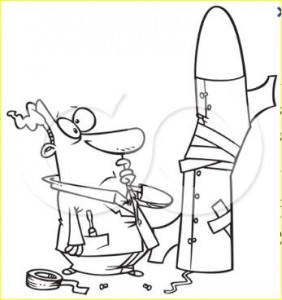 My inquiry soon shifted to another area. What was I going to use for a rocket? I certainly didn’t have any. Anything made of plastic would certainly not work. Rummaging through my dad’s workshop turned up an interesting possibility. It was a cardboard tube about a half-inch in diameter. This was perfect! I had limited permission to use dad’s power tools, so I used the jigsaw to turn a dowel into a nose cone for my rocket. I then taped it into place with electrical tape (none of that scotch tape stuff for us; my dad was an engineer and had all the good stuff). The next problem was wings. How do we make it go straight without wings? I found cardboard on the back of a pad of paper and cut out a triangle. I knew the wing had to handle the high wind speed and high G-forces during the moments after launch. So I used glue to hold my triangular wing in place.
My inquiry soon shifted to another area. What was I going to use for a rocket? I certainly didn’t have any. Anything made of plastic would certainly not work. Rummaging through my dad’s workshop turned up an interesting possibility. It was a cardboard tube about a half-inch in diameter. This was perfect! I had limited permission to use dad’s power tools, so I used the jigsaw to turn a dowel into a nose cone for my rocket. I then taped it into place with electrical tape (none of that scotch tape stuff for us; my dad was an engineer and had all the good stuff). The next problem was wings. How do we make it go straight without wings? I found cardboard on the back of a pad of paper and cut out a triangle. I knew the wing had to handle the high wind speed and high G-forces during the moments after launch. So I used glue to hold my triangular wing in place.
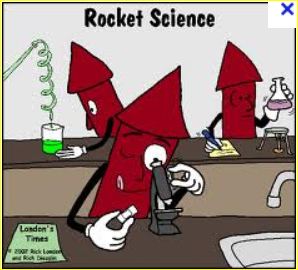 Over the next few months, I experimented with different rocket bodies made from many different substances. I created special wooden nozzles for the rockets that would give greater compression and lift to the rockets. I experimented with different wing designs. I tested different mixes for the rocket fuel, including powder fuel vs. solid fuel. All of these unique rocket designs had one thing in common, which my mom summed up rather well. “They’re just sticks of dynamite with fins glued on,” she said.
Over the next few months, I experimented with different rocket bodies made from many different substances. I created special wooden nozzles for the rockets that would give greater compression and lift to the rockets. I experimented with different wing designs. I tested different mixes for the rocket fuel, including powder fuel vs. solid fuel. All of these unique rocket designs had one thing in common, which my mom summed up rather well. “They’re just sticks of dynamite with fins glued on,” she said.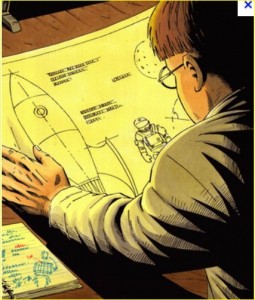 The rocket design changed over time, as you might expect. I eventually settled on a process that involved cutting a wooden dowel into two pieces. The first piece was sharpened to a nice point to ensure minimal air resistance. The second dowel had a hole drilled through the center, which was a technique I designed to increase the rocket’s thrusting power.
The rocket design changed over time, as you might expect. I eventually settled on a process that involved cutting a wooden dowel into two pieces. The first piece was sharpened to a nice point to ensure minimal air resistance. The second dowel had a hole drilled through the center, which was a technique I designed to increase the rocket’s thrusting power. Now, I have to admit what my mom said about my rockets was mostly true (about sticks of dynamite with fins glued on). And you can imagine all the time I spent picking up small bits of paper from exploded rockets that had been blown all over our driveway and lawn. But I wasn’t discouraged. I knew it was just a matter of time before I got it right. And besides, my reputation for rocketry was becoming legendary among my friends. They even started calling me One-Match-Steve. All my friends were of the stick-the-match-sorta-close-and-then-run-away-as-fast-as-you-can types. I, on the other hand, was the only kid stupid enough to hold the match steady until the rocket started burning. It didn’t matter. I wore my new nickname with pride and dignity.
Now, I have to admit what my mom said about my rockets was mostly true (about sticks of dynamite with fins glued on). And you can imagine all the time I spent picking up small bits of paper from exploded rockets that had been blown all over our driveway and lawn. But I wasn’t discouraged. I knew it was just a matter of time before I got it right. And besides, my reputation for rocketry was becoming legendary among my friends. They even started calling me One-Match-Steve. All my friends were of the stick-the-match-sorta-close-and-then-run-away-as-fast-as-you-can types. I, on the other hand, was the only kid stupid enough to hold the match steady until the rocket started burning. It didn’t matter. I wore my new nickname with pride and dignity. That was when things took a turn for the worse. More precisely, the rocket decided it had enough of this “up” stuff and decided to try a little “sideways” stuff. It didn’t like that very much so it quickly switched to “down” stuff and then “over” and “back” stuff. I remember marveling at what an interesting display of zigs and zags was taking place before my eyes. Somewhere out of the corner of my eye, I was aware that Keith was running at top speed in the opposite direction. But I couldn’t be bothered with that now. This was history in the making. I almost forgot to move when one of the zags started heading straight at me. But at the last second, a new zig forced it up. It got about 25 feet up when it began a new maneuver. This one I call a spin-in-place. You often have to develop a new vocabulary to describe the varied takeoff sequences, especially if you haven’t quite worked out some of problems with the wings. So naturally my journal is full of technical terms like “spin-in-place”, “zig zag maneuver”, “twisty”, “shaky”, and “wabbly”.
That was when things took a turn for the worse. More precisely, the rocket decided it had enough of this “up” stuff and decided to try a little “sideways” stuff. It didn’t like that very much so it quickly switched to “down” stuff and then “over” and “back” stuff. I remember marveling at what an interesting display of zigs and zags was taking place before my eyes. Somewhere out of the corner of my eye, I was aware that Keith was running at top speed in the opposite direction. But I couldn’t be bothered with that now. This was history in the making. I almost forgot to move when one of the zags started heading straight at me. But at the last second, a new zig forced it up. It got about 25 feet up when it began a new maneuver. This one I call a spin-in-place. You often have to develop a new vocabulary to describe the varied takeoff sequences, especially if you haven’t quite worked out some of problems with the wings. So naturally my journal is full of technical terms like “spin-in-place”, “zig zag maneuver”, “twisty”, “shaky”, and “wabbly”.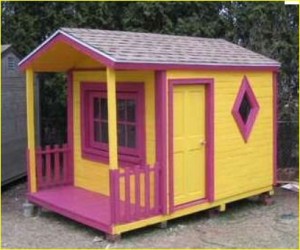 At this point, the only other kid with the guts to participate in my advanced research was Keith. We never called him One-Match-Keith, but in his own way, he had courage. He had a chemistry set of his own, and he had access to his sister’s outdoor doll house which we quickly converted to a mobile lab. It was here we hit on the best combination of rocket fuel.
At this point, the only other kid with the guts to participate in my advanced research was Keith. We never called him One-Match-Keith, but in his own way, he had courage. He had a chemistry set of his own, and he had access to his sister’s outdoor doll house which we quickly converted to a mobile lab. It was here we hit on the best combination of rocket fuel.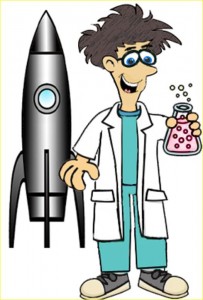 Then came the day we discovered the perfect combination of ingredients. We knew when we finished the cooking process that it had potential, but it wasn’t until we gave it the BB-Fire Test that we knew what we had. Instead of sitting still and producing a nice big flare, this little BB burned so hot and so fast, it launched itself. It didn’t need to be in a rocket or anything. It just flew. And, since we were inside a 6 x 8 foot doll house, the flying BB bounced from wall to wall like a bullet. Keith and I ducked and dodged that flaming pellet from Hell. Eventually, it was quiet. When the smoke cleared out of the doll house, we examined ourselves for burn holes, but it seemed we’d been spared.
Then came the day we discovered the perfect combination of ingredients. We knew when we finished the cooking process that it had potential, but it wasn’t until we gave it the BB-Fire Test that we knew what we had. Instead of sitting still and producing a nice big flare, this little BB burned so hot and so fast, it launched itself. It didn’t need to be in a rocket or anything. It just flew. And, since we were inside a 6 x 8 foot doll house, the flying BB bounced from wall to wall like a bullet. Keith and I ducked and dodged that flaming pellet from Hell. Eventually, it was quiet. When the smoke cleared out of the doll house, we examined ourselves for burn holes, but it seemed we’d been spared.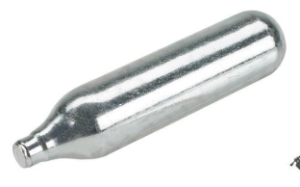 Now in our neighborhood, not all kids are the same. I was a BB gun kid. Some kids had pellet guns, which required you to pump up the air pressure for each pellet. Keith was one of those rare kids who had a CO2 powered pellet gun. When I saw that cool empty CO2 cartridge, I knew we had to do something with it. Nothing this perfectly formed should be thrown away. That’s when I realized it would make the perfect body for a small rocket. It was made of metal! And it already had a natural nozzle built into the end of it. And, if it worked out, we could easily get more of them. Perfect, perfect, perfect!
Now in our neighborhood, not all kids are the same. I was a BB gun kid. Some kids had pellet guns, which required you to pump up the air pressure for each pellet. Keith was one of those rare kids who had a CO2 powered pellet gun. When I saw that cool empty CO2 cartridge, I knew we had to do something with it. Nothing this perfectly formed should be thrown away. That’s when I realized it would make the perfect body for a small rocket. It was made of metal! And it already had a natural nozzle built into the end of it. And, if it worked out, we could easily get more of them. Perfect, perfect, perfect! I stood there in shocked disbelief. There were no little paper shards falling to the ground. That little rocket was gone-gone-gone. And with the force of that explosion, I knew it could have gone anywhere it wanted to go. I looked around the immediate area to see if there was a hunk of exploded metal lying somewhere on the ground. I didn’t see any metal shards, but I did see Keith’s heels as he continued sprinting through the field toward his house.
I stood there in shocked disbelief. There were no little paper shards falling to the ground. That little rocket was gone-gone-gone. And with the force of that explosion, I knew it could have gone anywhere it wanted to go. I looked around the immediate area to see if there was a hunk of exploded metal lying somewhere on the ground. I didn’t see any metal shards, but I did see Keith’s heels as he continued sprinting through the field toward his house. And so, I went into my house. At best it might take a day before their bodies were discovered. But after that, it would be simple to calculate from the hole in the side of the house the direction from which the rocket had come. I knew I needed to put my affairs in order. They would be coming for me soon. But I didn’t want to make it too easy, so I said nothing. I just stoically awaited my fate. When they came for me, I would calmly admit everything. Through that night and all the next day, I waited. Still they did not come. Nor did I see any police cars or ambulances. Nor did I see Keith, although I am sure he watched for police cars from his bedroom window.
And so, I went into my house. At best it might take a day before their bodies were discovered. But after that, it would be simple to calculate from the hole in the side of the house the direction from which the rocket had come. I knew I needed to put my affairs in order. They would be coming for me soon. But I didn’t want to make it too easy, so I said nothing. I just stoically awaited my fate. When they came for me, I would calmly admit everything. Through that night and all the next day, I waited. Still they did not come. Nor did I see any police cars or ambulances. Nor did I see Keith, although I am sure he watched for police cars from his bedroom window.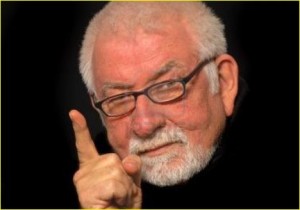 Now, years later, I can’t tell you why, but I never built another rocket after that. Maybe it was because I became interested in girls. Or maybe another hobby came along and displaced my interest in rockets. But I think it was simpler than that. I think there are times in your life when some cosmic force reaches down to give you a good emotional shaking. Kinda like God’s way of saying, “What’s the matter with you? Are you nuts? Stop that!!”
Now, years later, I can’t tell you why, but I never built another rocket after that. Maybe it was because I became interested in girls. Or maybe another hobby came along and displaced my interest in rockets. But I think it was simpler than that. I think there are times in your life when some cosmic force reaches down to give you a good emotional shaking. Kinda like God’s way of saying, “What’s the matter with you? Are you nuts? Stop that!!”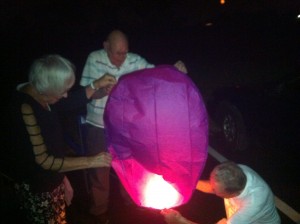 This time, Dad came forward to help. I was pleased. A trained engineer is always a welcome addition in any high-risk endeavor involving fire. Dad watched carefully, like the professional manager he is, leaving the details to other members of his team. This time the launch was flawless. I was busy taking pictures to mark the moment. Ardis was still worried about leaving fingerprints, but I told her that didn’t matter any more because there would be a picture of her doing the deed on the internet within a day. With such evidence, no one needed fingerprints. And no denials were possible.
This time, Dad came forward to help. I was pleased. A trained engineer is always a welcome addition in any high-risk endeavor involving fire. Dad watched carefully, like the professional manager he is, leaving the details to other members of his team. This time the launch was flawless. I was busy taking pictures to mark the moment. Ardis was still worried about leaving fingerprints, but I told her that didn’t matter any more because there would be a picture of her doing the deed on the internet within a day. With such evidence, no one needed fingerprints. And no denials were possible.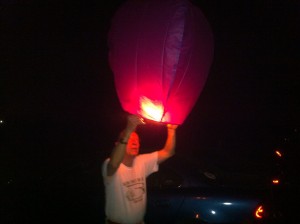 And so went the fourth launch. Absolutely flawless. With a team like this, the Russians would never have beat us in the Space Race.
And so went the fourth launch. Absolutely flawless. With a team like this, the Russians would never have beat us in the Space Race.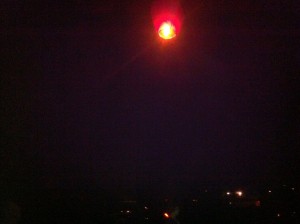 But tonight was our night. We were amazing.
But tonight was our night. We were amazing.